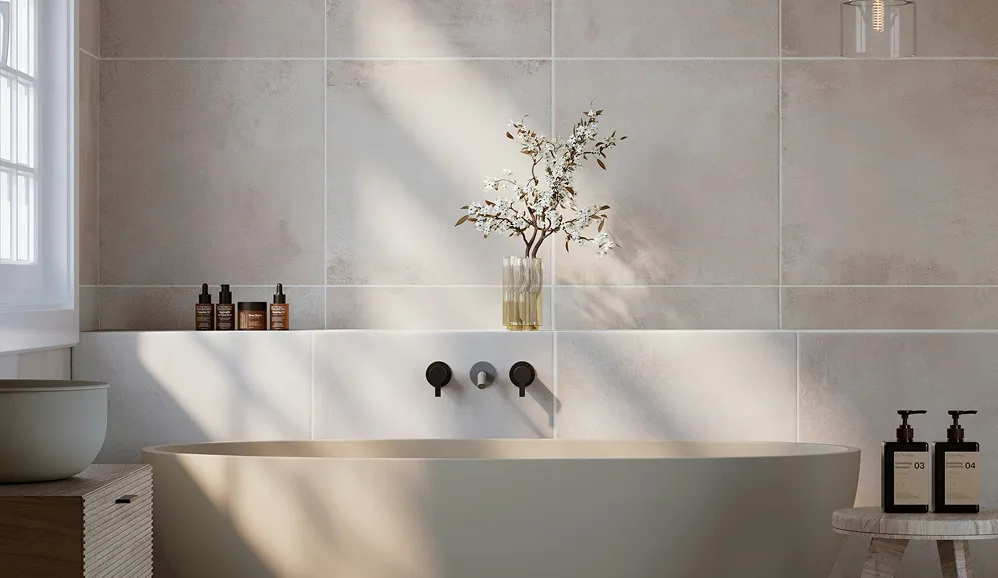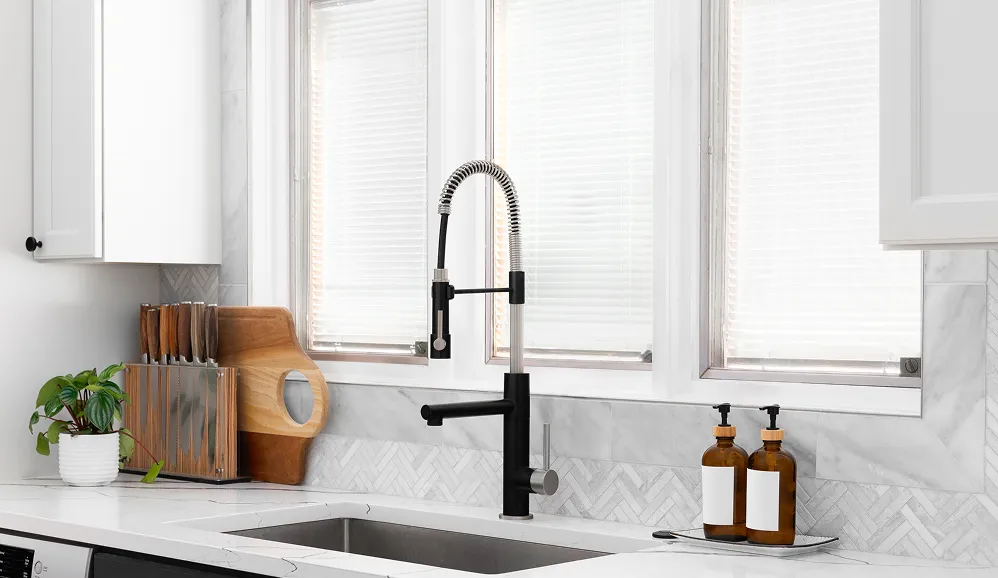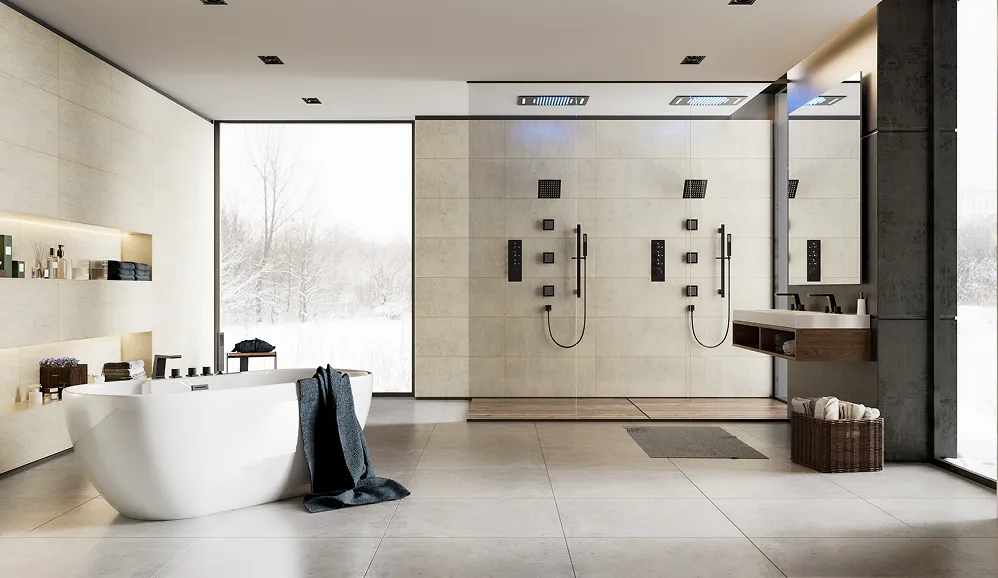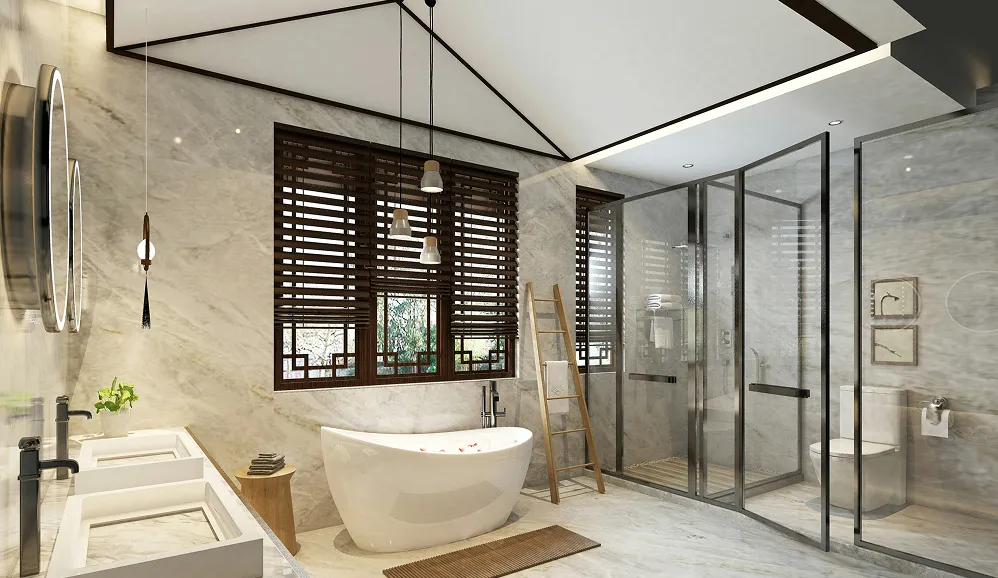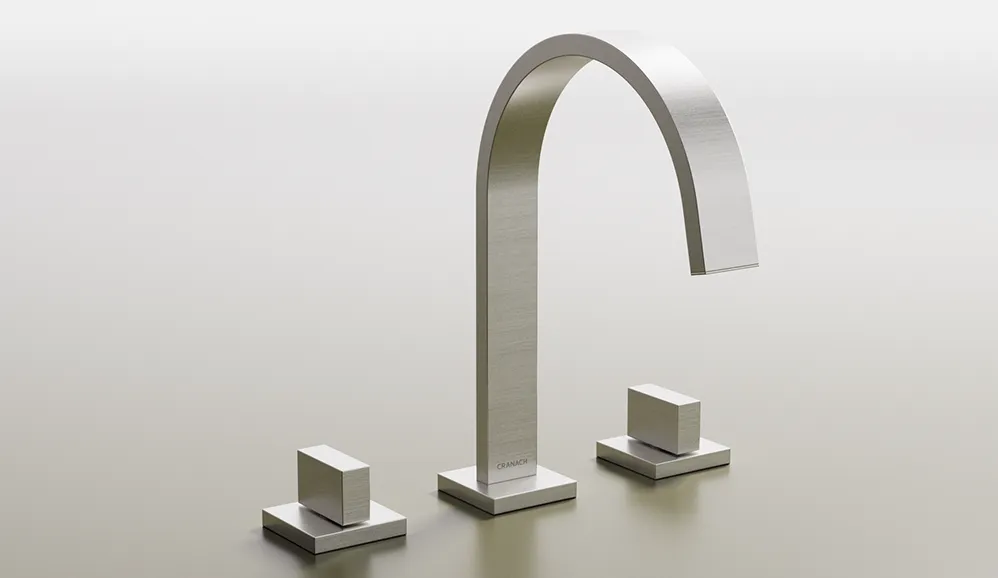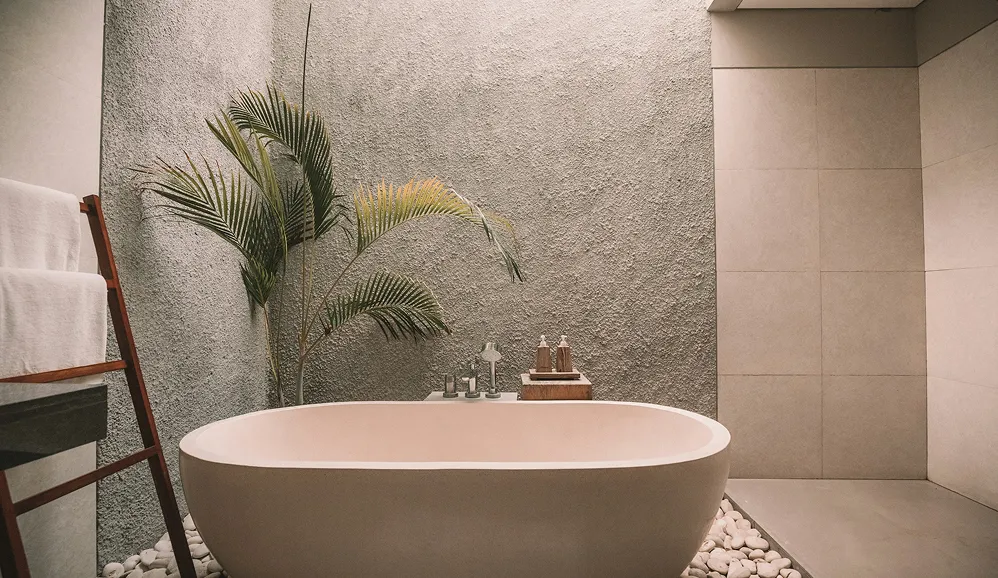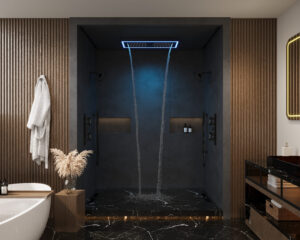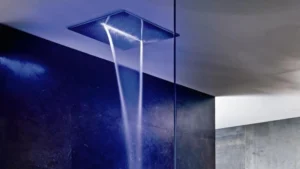Elevate Your Kitchen With The Perfect Faucet
Choosing the right kitchen faucet is more than just an aesthetic decision; it significantly impacts your kitchen’s functionality and overall feel. This workhorse fixture, responsible for everything from prepping ingredients to cleaning up, deserves careful consideration. A subpar faucet can lead to daily frustrations: weak water pressure, annoying leaks, hard-to-reach grime, and even compatibility issues with your sink.
Conversely, the perfect faucet can truly elevate your kitchen experience. Imagine a smooth workflow, a design that complements your style, and even noticeable water savings. In 2025, the faucet market offers a wide array of choices, from timeless classics to cutting-edge smart faucets with touchless technology.
This guide will equip you with the knowledge you need to make an informed decision, whether you’re a seasoned contractor, a DIY enthusiast, or a design professional. We’ll explore key factors like mounting styles and finishes, as well as advanced spray options and smart features.
Understanding Key Features
Understanding the nuances of valve technology, water flow rates, and the importance of brand reputation and warranty will empower you to invest wisely in a faucet that stands the test of time. We’ll also cover practical considerations like installation compatibility and budget, giving you the confidence to tackle your next kitchen project.
- Mounting Styles: From deck-mounted to wall-mounted, understanding the different mounting styles is crucial for compatibility with your sink and overall kitchen design.
- Finishes: Explore the range of finishes available, from classic chrome and stainless steel to more contemporary options like brushed nickel and matte black.
- Spray Technologies: Discover the latest innovations in spray technology, including pull-down sprayers, pull-out sprayers, and touch-activated features.
Smart Faucets and Beyond
Smart faucets are becoming increasingly popular, offering hands-free operation and other convenient features. We’ll delve into the benefits and considerations of these high-tech options.
- Touchless Controls: Experience the convenience and hygiene of touchless faucets, ideal for busy kitchens.
- Voice Activation: Control your faucet with simple voice commands, integrating seamlessly with smart home systems.
- Water Efficiency: Many modern faucets incorporate water-saving features, helping you reduce your environmental impact and lower your utility bills.
By considering these key aspects, you can confidently choose a kitchen faucet that not only enhances your kitchen’s appearance but also improves its functionality for years to come.
1. Faucet Type and Mounting Style
Choosing the right faucet is a critical first step in any kitchen renovation. This decision affects not only the overall aesthetic of your kitchen, but also its functionality and the ease of installation. A faucet that clashes with your sink can lead to plumbing headaches and poor performance.
Luckily, there’s a wide variety of faucet types to choose from, each catering to different needs. Let’s explore some of the most common options:
- Single-Handle Faucets: These faucets offer streamlined control over both temperature and water flow with a single handle. This simple operation makes them a popular choice for busy kitchens and DIY installations.
- Double-Handle Faucets: With separate handles for hot and cold water, these faucets allow for precise temperature control. They often come in traditional or vintage styles, adding a touch of classic charm.
- Pull-Down Faucets: These faucets feature a retractable spray head that neatly docks back into the spout. A pull-down faucet provides extended reach for rinsing dishes and cleaning the sink, making it ideal for larger sinks.
- Pull-Out Faucets: Similar to pull-down models, pull-out faucets also have an extending spray head. However, the spray head is typically smaller and more compact, which is a good fit for smaller kitchens.
- Touchless Faucets: For the ultimate in convenience and hygiene, consider a touchless faucet. Activated by a simple hand wave, these faucets minimize the spread of germs and conserve water, especially handy when handling raw meat. They do, however, tend to be more expensive.
- Pot Fillers: Conveniently located near the stovetop, pot fillers offer a dedicated water source for filling large pots and pans. This eliminates the need to carry heavy, water-filled cookware across the kitchen, improving safety and convenience. Keep in mind that these typically require dedicated plumbing lines and wall mounting.
- Commercial-Style Faucets: These faucets add a professional chef’s touch to home kitchens with their spring coils and industrial designs. They generally offer high water flow rates and durable construction.
Beyond the type of faucet, the mounting style also plays an important role:
- Deck-Mounted: This is the most common mounting style, where the faucet mounts directly to the sink deck or countertop. Deck-mounted faucets are typically easy to install and are available in a wide array of styles.
- Wall-Mounted: For a unique and streamlined look, consider a wall-mounted faucet. While this style frees up counter space, it requires more complex plumbing.
Pros: The vast selection allows you to find the perfect match for your kitchen’s style and workflow. Specialized options like pot fillers address specific needs, while different mounting styles offer flexibility for various sink configurations.
Cons: Certain faucet types require specific sink hole configurations (single-hole, three-hole, etc.). Some styles, particularly wall-mounted and pot fillers, might require plumbing modifications. Advanced features, like those found in touchless faucets, often come with a higher price tag.
2. Finish and Durability
The finish of your kitchen faucet isn’t just about aesthetics. It plays a vital role in the fixture’s lifespan, how much maintenance it needs, and how well it resists daily wear and tear. The finish determines a faucet’s resilience against water spots, tarnishing, and corrosion—essential for preserving its look and functionality over time. Choosing the right finish ensures your kitchen faucet remains a beautiful, functional centerpiece for years to come.
Popular kitchen faucet finishes span a wide spectrum. From classic chrome and stainless steel to the warmer hues of oil-rubbed bronze and the sleekness of matte black, there’s a finish for every kitchen. Brushed nickel provides a pleasing middle ground, bridging modern and traditional aesthetics. Each finish has its own distinct characteristics, impacting both the appearance and practicality of the faucet.
For example, polished chrome offers a bright, reflective look but readily displays fingerprints and water spots compared to brushed nickel. Matte black makes a bold, modern statement yet can be susceptible to scratching. Oil-rubbed bronze exudes rustic charm, however, it requires specific cleaning products to maintain its finish.
Considering Durability and Maintenance
When evaluating finishes, prioritize features that enhance durability and simplify upkeep. PVD (Physical Vapor Deposition) finishes provide exceptional resistance to scratches, corrosion, and tarnish, ensuring a longer-lasting fixture. Spot-resistant finishes are a godsend for busy kitchens, minimizing the visibility of water spots and fingerprints. This makes cleaning much less of a chore.
For a cohesive kitchen design, choose a faucet finish that complements your other fixtures and hardware. Fingerprint-resistant options are also available, especially beneficial for high-use kitchens.
Pros and Cons of Different Finishes
Pros:
- Longevity: High-quality finishes, particularly those with PVD, can last for decades without showing signs of age.
- Design Versatility: The wide array of available finishes lets you easily match your faucet to your kitchen’s décor.
- Reduced Cleaning: Spot-resistant and fingerprint-resistant finishes drastically cut down on cleaning time.
Cons:
- Cost: Premium finishes, like PVD, often come with a higher price tag.
- Maintenance: Certain finishes, such as oil-rubbed bronze, require specialized cleaning agents.
- Visibility of Wear: Polished finishes tend to show water spots and fingerprints more easily.
3. Spray Features and Water Flow
The single, uninspired kitchen faucet stream is a relic of the past. Modern faucets boast an array of spray features and flow options, all designed to streamline your everyday kitchen tasks. This is a key consideration when selecting a new faucet, influencing everything from filling large pots to rinsing stubborn food particles.
Consider your typical kitchen routine. Do you often wash large baking sheets? A wide, sweeping spray is invaluable. Struggling with stuck-on food? A powerful boost spray can help. From gently rinsing delicate produce with an aerated stream to pre-rinsing dishes with a targeted spray, the right features can dramatically improve your kitchen experience.
Common spray patterns include:
- Stream: A standard, aerated flow for everyday use.
- Spray: A wider, dispersed spray, perfect for rinsing produce and cleaning dishes.
- Sweep: A powerful, blade-like spray designed to clear debris from sinks and countertops.
- Boost: A concentrated, high-pressure spray for dislodging stubborn food residue.
Beyond spray patterns, think about the faucet’s flow rate, measured in gallons per minute (GPM). Higher flow rates (1.5-2.2 GPM) quickly fill pots and pans, but also increase water usage. Local regulations sometimes restrict maximum flow rates, so check your area’s guidelines. For example, you can find more information at the Pennsylvania Water Flow Rate Sitemap.
Many faucets offer a pause function, temporarily stopping water flow without changing temperature settings. This helps conserve water while scrubbing dishes or loading the dishwasher.
A magnetic docking system is another convenient feature, ensuring the spray head retracts smoothly and securely into the spout, preventing dangling and dripping. A high-arc design also offers ample clearance for filling large pots and bulky items.
Pros:
- Specialized spray patterns optimize various tasks.
- Pause features conserve water.
- Higher flow rates fill containers faster.
- Magnetic docking offers convenience and a clean look.
Cons:
- More features often lead to higher costs.
- Certain spray features may reduce water pressure.
- Flow rates may be limited by local regulations.
4. Valve and Control Technology: The Heart of Your Kitchen Faucet
The inner workings of your kitchen faucet are just as important as its outward appearance. Valve and control technology determine how smoothly the faucet operates, how long it lasts, and how easy it is to use. Investing in a faucet with a high-quality valve mechanism is crucial for preventing leaks, drips, and future frustration.
This aspect of a kitchen faucet is often overlooked, but it directly impacts the faucet’s performance and longevity. A sleek design won’t mean much if the faucet constantly drips or becomes difficult to control.
Modern Valve Technologies
Modern faucets offer a variety of valve technologies, each with its own advantages and disadvantages:
- Ceramic Disc Valves: Generally considered the gold standard, ceramic disc valves are known for their smooth operation, durability, and leak resistance. The ceramic discs create a watertight seal requiring minimal maintenance and typically outlasting other valve types.
- Cartridge Valves: These self-contained units are relatively easy to replace if they malfunction. While not as long-lasting as ceramic discs, they still offer reliable performance.
- Ball Valves: Less common in modern faucets, ball valves use a rotating ball with chambers to control water flow and temperature. They can be susceptible to leaks and may require more frequent maintenance.
- Compression Valves: The oldest type of valve technology, compression valves utilize rubber washers that compress to stop water flow. These are prone to wear and tear and require regular washer replacements.
Advanced Control Features
Beyond the core valve mechanism, consider these important control features:
- Temperature Memory Settings: Some faucets allow you to preset your preferred water temperature, eliminating the need for constant adjustments. This added convenience can also help conserve water.
- Pressure Balancing Capabilities: This essential safety feature maintains consistent water temperature even when water pressure fluctuates elsewhere in the house, preventing scalding. This is particularly important in households with children.
- Electronic vs. Mechanical Controls: Electronic controls offer precise temperature and flow adjustments, often with touchless activation for added convenience and hygiene. However, they require a power source (either batteries or AC power). Mechanical controls, conversely, are simpler and don’t require electricity, but they may not offer the same level of precision.
Weighing the Pros and Cons
Considering the pros and cons of different valve and control technologies can help you make an informed decision:
| Feature | Pro | Con |
|---|---|---|
| Quality Valves | Prevent leaks, saving water and money | Often come with a higher initial cost |
| Durability | Ceramic discs offer extended faucet lifespan | Some valve types are more difficult to repair |
| Control Tech | Improved user experience | Electronic controls require a power source |
5. Installation and Compatibility
Choosing a stunning kitchen faucet is only half the battle. Ensuring it seamlessly integrates with your existing sink is equally crucial. This often-overlooked factor can significantly impact your project’s timeline and budget. A beautiful faucet is useless if it doesn’t fit!
The first compatibility hurdle is the number of mounting holes required (ranging from one to four). Measure your sink and ensure the faucet aligns. Many faucets come with a deck plate, a lifesaver for covering unused holes when switching from a different configuration. For example, if your sink has three holes, but you love a single-hole faucet, a deck plate will provide a clean, finished look.
Beyond the holes, consider the mounting hardware and water line connections. Look for features like quick-connect installation systems and flexible supply lines, which can drastically simplify the process. Some faucets even offer tool-free installation, making them ideal for DIY enthusiasts. However, more complex features, such as those found in high-tech faucets, might require professional installation. Factor this potential cost into your budget.
Sink thickness also matters. While many faucets adapt to various sink thicknesses, some have limitations. Double-check the specifications to avoid surprises. Retrofitting older sinks can present unique challenges, so be prepared for potential modifications. You might be interested in Plumbing Installation Sitemap for more information. Lastly, highly stylized or non-standard sink designs can further complicate installation. Confirm compatibility before purchasing.
Pros of Considering Installation and Compatibility
- Simplified Installation: Features like quick-connect systems and tool-free installation can significantly reduce installation time and complexity.
- Adaptability: Many faucets are designed to work with various sink configurations, thanks to features like deck plates and adjustable components.
- Cost Savings: Easy-to-install faucets can save you money on professional plumbing services.
Cons of Overlooking Installation and Compatibility
- Professional Installation Required: Some complex faucet features might require professional installation, adding to the overall cost.
- Retrofit Challenges: Adapting older sinks to new faucets can present unforeseen difficulties.
- Limited Compatibility: Non-standard sink designs might have limited compatibility with certain faucet types.
This aspect of faucet selection is important because a smooth installation saves time, money, and frustration. Choosing a compatible faucet ensures a seamless and enjoyable kitchen upgrade.
6. Smart Features and Technology
Smart kitchen faucets are bringing technology into the heart of our homes. They offer a compelling combination of convenience, water conservation, and sleek design, making them an attractive upgrade for modern kitchens. These aren’t just ordinary faucets; they incorporate technology to boost functionality, from simple touchless activation to advanced voice control and water usage tracking.
Exploring the Tech Behind Smart Faucets
- Touchless/Hands-Free Activation: Wave goodbye to messy faucet handles. Touchless activation lets you turn the water on and off with a simple hand motion. This is particularly handy when your hands are full or covered in food. It’s also more hygienic, reducing the spread of germs.
- Voice Control: Imagine controlling your faucet with your voice. Smart faucets compatible with platforms like Amazon Alexa or Google Assistant allow you to turn the water on and off, dispense specific amounts, and even adjust the temperature without lifting a finger. This is incredibly convenient for busy cooks or those with limited mobility.
- Measured Fill Technology: Precision in the kitchen is now easier than ever. Measured fill technology dispenses exact water quantities at the touch of a button, taking the guesswork out of cooking and baking. No more measuring cups needed!
- Temperature Indicators with LED Lights: Stay safe and stylish with LED temperature indicators. These lights provide a clear visual cue of the water temperature, helping prevent accidental burns and adding a touch of modern flair.
- Water Usage Monitoring and Conservation Features: Some smart faucets take water conservation to the next level. They track your water usage, providing insights into your consumption patterns and highlighting areas where you could save. This can contribute to a more eco-conscious home and potentially lower your water bills.
Weighing the Pros and Cons
Pros:
- Enhanced Hygiene: Touchless operation minimizes the spread of germs and bacteria.
- Water Conservation: Features like measured fill and usage monitoring promote responsible water use.
- Added Convenience: Hands-free control and programmable settings simplify kitchen tasks.
Cons:
- Increased Cost: Smart faucets typically come with a higher price tag than traditional faucets.
- Technical Requirements: Some models may need electricity or battery replacements.
- Potential for Malfunctions: More complex components mean there are more potential points of failure.
Installation and Setup Advice
- Check Water Supply Lines: Make sure your water lines are compatible with the faucet’s connections.
- Consider the Power Source: Determine if the faucet needs an electrical outlet or batteries.
- Smart Home Compatibility: If you’re using voice control, ensure compatibility with your smart home system.
- Professional Installation Recommended: While DIY is possible, hiring a licensed plumber for complex installations is often the best approach.
Pricing Considerations
Smart faucet prices vary widely depending on the brand and included features. Expect to pay more than for a standard faucet, with prices ranging from $300 to over $1,000 for high-end models. Brands like Kohler offer a range of options.
Smart kitchen faucets are undoubtedly transforming the way we interact with our kitchens. The initial investment may be higher, but the convenience, hygiene benefits, and potential for water savings make them a valuable addition to any modern kitchen.
7. Brand Reputation and Warranty: An Investment in Peace of Mind
A kitchen faucet isn’t a purchase you make lightly. It’s a fixture you expect to last for years, handling daily use without complaint. That’s why brand reputation and warranty are so important. They offer peace of mind, knowing your investment is protected.
A respected brand usually signifies a commitment to quality. This often means better materials, stricter manufacturing processes, and ultimately, a more durable product. Reputable manufacturers also tend to keep replacement parts available, even for older models. This can be a lifesaver if you need a repair down the road.
Features to Consider
- Warranty Length and Coverage: Warranties range from 5 years to a lifetime. Read the fine print carefully. Some warranties cover only specific parts or exclude certain types of damage (like finish issues or commercial use). A lifetime warranty sounds great, but does it refer to the product’s lifetime or yours?
- Replacement Parts Availability: Can you easily find replacement parts in a catalog or through retailers? Knowing this upfront can save you headaches later.
- Customer Service Quality: Online reviews offer valuable insights into a brand’s customer service. Responsive and helpful support can make a world of difference if problems arise.
- Reputation for Durability and Reliability: Look for brands known for building tough, long-lasting products. Consumer Reports and online forums are excellent resources for this kind of research.
- Manufacturing Standards and Certifications: Certifications like WaterSense (for water efficiency) and NSF/ANSI standards guarantee the faucet meets certain quality and safety benchmarks.
Pros
- Longer Warranties: Quality brands often offer more comprehensive warranties, protecting you from defects and early failures.
- Assured Parts Availability: Established manufacturers typically ensure parts remain available for years, making repairs and maintenance easier.
- Certified Products: Look for certifications as proof that the faucet meets industry standards for safety, performance, and environmental responsibility.
Cons
- Higher Prices: Premium brands usually cost more upfront. However, view this as an investment in quality and longevity.
- Warranty Limitations: Even the best warranties have exclusions and limitations. Understand these before you buy.
- Variable Service Quality: Customer service can vary, even with reputable brands.
Implementation Tip
Don’t get fixated on the initial price. Consider the potential long-term costs of repairs and replacements. A slightly pricier faucet from a reputable brand with a strong warranty could save you money in the long run compared to a cheaper, less reliable model.
Choosing a kitchen faucet is a decision that impacts your kitchen’s functionality and your overall peace of mind. By understanding brand reputation and warranty terms, homeowners, contractors, and plumbers alike can choose a faucet that not only looks good but also performs reliably for years to come. Make sure this is a top priority on your checklist. The right faucet blends functionality and durability – a must-have for any kitchen.
7-Point Kitchen Faucet Feature Comparison
| Aspect | Core Features ✨ | UX/Quality ★ | Value Proposition 💰 | Unique Selling Points 🏆 | Target Audience 👥 |
|---|---|---|---|---|---|
| Faucet Type and Mounting Style | Single/double handle, pull-down/out, touchless, wall/deck mounting | Versatile & convenient; may need plumbing modifications | Tailored for varied sink setups; higher cost for advanced features | Specialized pot fillers & sensor options | Homeowners seeking flexible setups |
| Finish and Durability | Chrome, stainless, brushed nickel, oil-rubbed bronze, matte black; PVD, fingerprint resistant | Long-lasting finish with low maintenance; feels premium | Durable look that coordinates with décor; premium pricing | Corrosion, tarnish, & water spot resistance | Design-conscious homeowners |
| Spray Features and Water Flow | Multiple spray patterns (stream, spray, sweep, boost), pause function, high-arc design, 1.5-2.2 GPM | Optimized for dishwashing and filling tasks; efficient water control | Enhances cleaning efficiency; mindful of water regulations | Variable spray patterns and pause capability | Busy kitchens & families |
| Valve and Control Technology | Ceramic disc, cartridge, ball, compression valves; temperature memory; pressure balancing | Reliable with smooth operation; minimizes leaks | Advanced control boosts longevity though at a higher cost | Superior ceramic disc and programmable options | Users seeking tech-driven reliability |
| Installation and Compatibility | 1-4 mounting holes, quick-connect systems, deck plates, flexible supply lines, adaptable to sinks | Tool-free and user-friendly; reduces installation hassles | Saves on professional installation costs; adaptable design | Quick and versatile installation solutions | DIY enthusiasts & professional installers |
| Smart Features and Technology | Touchless activation, voice control, measured fill, LED temperature, water usage monitoring | Modern and intuitive; improves hygiene and saves resources | Enhances convenience and conservation with smart integration; costly | Integrated smart home compatibility and precise control | Tech enthusiasts & modern homeowners |
| Brand Reputation and Warranty | Extended warranty, quality certifications, parts availability, reliable customer service | Provides peace of mind through consistent quality and support | Assures long-term value with trusted brand reputation; premium pricing | Trusted excellence with lifetime or extended warranties | Value-conscious & brand-loyal customers |
Making an Informed Decision
Choosing a kitchen faucet might seem simple, but with so many options available, it’s easy to feel overwhelmed. By considering seven key factors, you can confidently select a faucet that perfectly suits your needs, enhances your kitchen’s functionality, and reflects your personal style. These factors include faucet type and mounting style, finish and durability, spray features and water flow, valve and control technology, installation and compatibility, smart features and technology, and brand reputation and warranty. Remember to prioritize the features most important to you and your budget.
Choosing the right research tools can also simplify your decision-making process. Use online comparison charts from retailers like Home Depot to evaluate features side-by-side. Reading customer reviews on sites like Amazon can offer valuable insights into real-world performance and durability. Visiting showrooms or home improvement stores allows you to experience different faucet styles and functionalities firsthand.
Practical Considerations Before You Buy
Before you start shopping, take some practical steps. Measure your sink and countertop carefully to ensure compatibility with your chosen faucet. Also, check the existing plumbing configuration to anticipate any potential installation challenges. This will save you headaches down the road.
Budget considerations play a significant role in faucet selection. While high-end faucets may offer advanced features and premium finishes, budget-friendly options can provide excellent functionality and style. Allocate resources wisely by balancing desired features with affordability. Consider long-term costs, such as water efficiency and potential maintenance expenses.
Ensuring a Smooth Installation
Integration and compatibility factors are crucial for a seamless installation process. Verify the faucet’s compatibility with your sink’s configuration and existing plumbing lines. Check for required adapters or accessories beforehand. A little preparation can make the installation process much smoother.
In summary, selecting the ideal kitchen faucet involves balancing functionality, style, and budget. Prioritize essential features, consider long-term value, and ensure compatibility with your existing kitchen setup. Thorough research and careful planning will result in a faucet that elevates both the aesthetics and functionality of your kitchen.
Upgrade your kitchen with a faucet that combines style, performance, and durability. Cranach bath and kitchen offers a wide selection of high-quality kitchen faucets designed to meet the needs of discerning homeowners, contractors, and designers. Explore our collection and discover the perfect faucet to transform your kitchen today. Visit Cranach bath and kitchen

